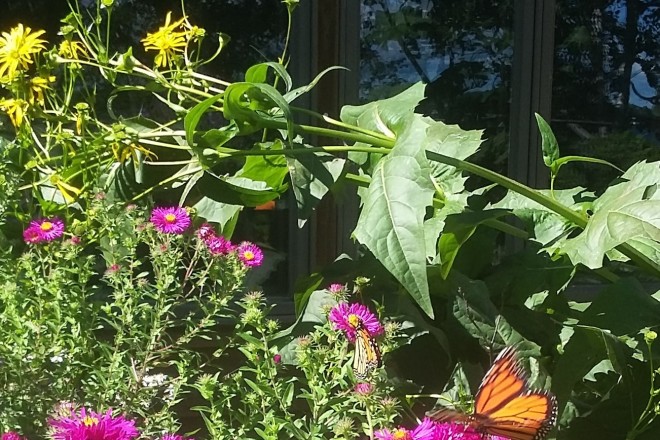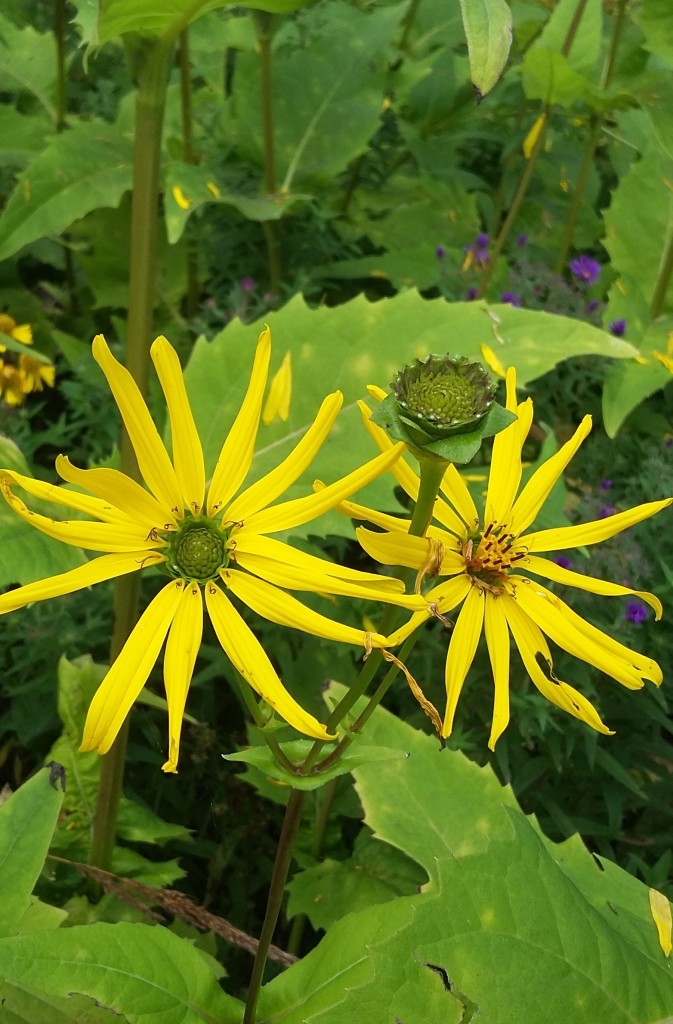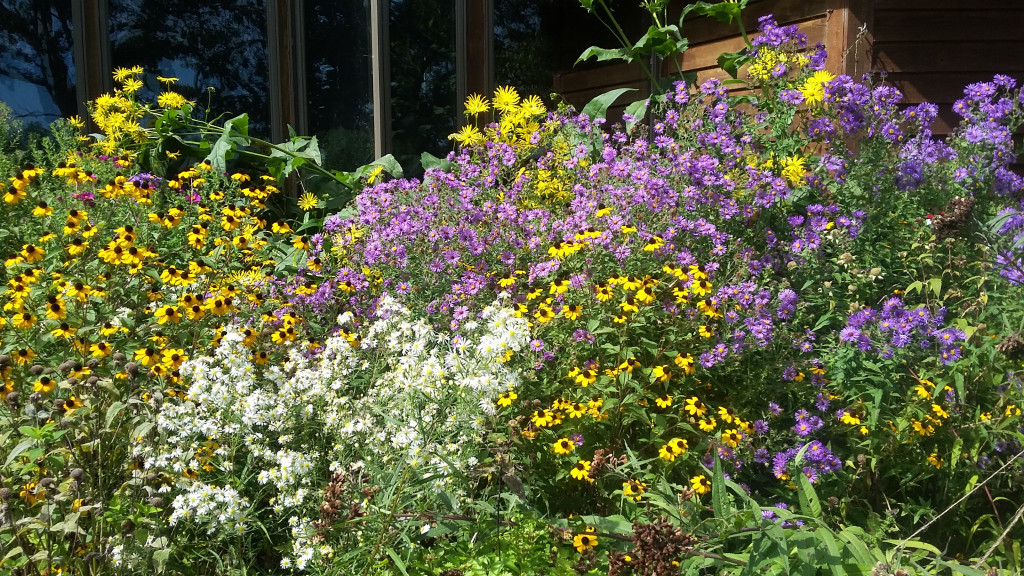Going Native: Monarchs Found Good Food This Year
- Share
- Tweet
- Pin
- Share

By Peter Sigmann
This year’s summer apparently was a good season for the Monarch Butterflies in Door County. They came in small numbers and found plenty of milkweed on roadsides and in protected or neglected sites to allow their larvae to develop. Some unfortunate monarchs had their development cut short when their host plants were killed by highway mowing crews, but by early August the locally hatched population was busy feeding and reproducing all over the peninsula.
Their favored sources of nectar were simple “regular” (daisy-like) native blossoms, including various sunflowers, Joe-Pye Weed and Milkweed, their “home flower.” Conventional garden flowers like roses, zinnias, gladiolas, mums were of no interest to them. The next generation, destined to fly to the highlands of Mexico, was even more plentiful and appeared totally dedicated to traveling and eating.
Migration began gradually in early September with Monarchs crossing the mouth of Little Sturgeon Bay and heading to my patch of Cup Plants where they fed for a couple of hours before being replaced by new arrivals. When the Cup Plant flowers faded in mid-September the Monarchs switched to the New England Asters, which will bloom through October and will provide nectar for stragglers.
The Monarch’s unique and wondrous life cycle is subject to many adverse conditions that are caused by human activity and by weather events. We can do our part in helping the Monarchs by sending them on their fall journey in optimal and well-fed condition. Two plants that bloom in late summer and fall will reliably provide food for the road: the Cup Plant and the New England Aster.
The Cup Plant is a prairie plant. It likes Door County soil and climate. Plants are 6’ to 8’ tall and reach up to 14’ in a moist location, such as a rain garden. The leaves surround a strong square stalk forming a cup which collects water for the benefit of birds and insects. The long stalk carries multiple daisy-like yellow flowers that literally advertise for butterflies.
Because of their height Cup Plants are best planted against a supportive background, such as trees, fences, buildings, but in a sunny location. The seed heads of Cup Plants are appreciated as food by migrating birds, but the gardener may want to remove the seeds before maturity in order to limit the spread of the Cup Plants.
The New England Aster is native to our area. It is the showiest and most widespread of the 30 species of asters that provide visual pleasure in fall. The wild variety grows 3’ to 4’ tall. Low-growing cultivars are available in garden stores. Clusters of attractive flower heads range from purple to lavender to pink. The central disk flower is yellow and loaded with pollen. Bumblebees and butterflies spend extended time feeding on these closely spaced flowers.
Both plants are easily grown from seed and compete well against weeds and grasses. Seeding is done by imitating nature, i.e. placing the seeds on the ground in the fall and letting rain, snow and frost prepare the seeds for germination. The ground should not be hard and compacted and should be at least temporarily free of fallen leaves when the seeds are placed on the soil. It is not necessary to cover the seeds.
This year’s seeds of New England Asters can still be harvested on the roadside. Fuzzy balls of seeds will gradually release seeds to the wind. Most seeds will wind up on unsuitable ground. Picking seeds for a desired location helps to propagate the species. At this time the Cup Plant seeds have fallen or been eaten by birds, but there should be a good supply of seeds left over from the Wild Ones seed exchange at the annual meeting on Oct. 20 at Crossroads at Big Creek. Sharing seeds from thriving local native plants is a key strategy for inexpensive and enjoyable landscaping. The Monarchs are apparently in agreement.
“Going Native” is an occasional series from the Door County Chapter of Wild Ones. Wild Ones: Native Plants, Natural Landscapes promotes environmentally sound practices to encourage biodiversity through the preservation, restoration and establishment of native plant communities. The Door County chapter of Wild Ones aims to share knowledge and experience in natural landscaping by means of nature walks, yard visits and lectures. For more information visit wildones.org.



